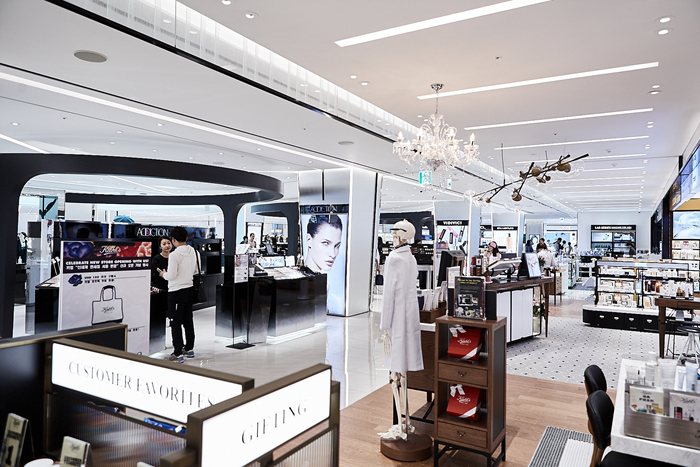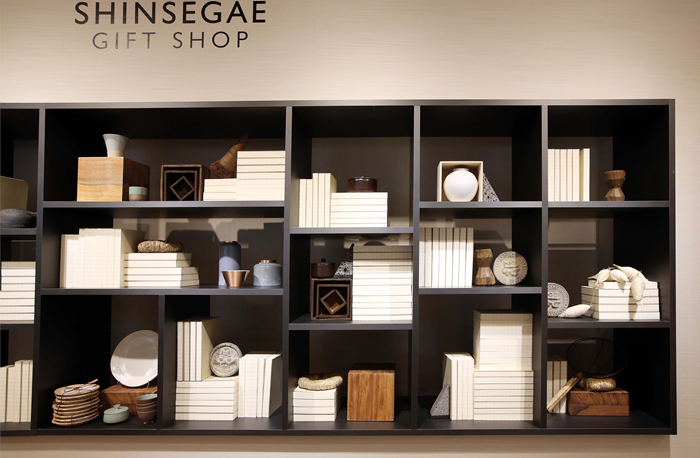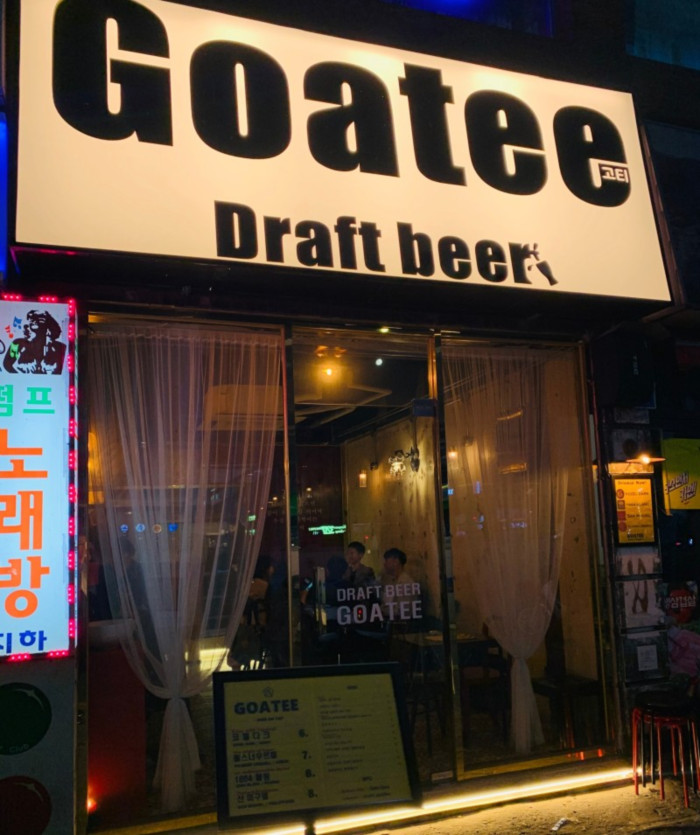Dongnimmun Gate (독립문)
16.1Km 2022-12-15
251, Tongil-ro, Seodaemun-gu, Seoul
Dongnimmun stands at the location originally known as Yeongeun, where envoys were once treated. When a Chinese envoy visited, the King would go out through this door to greet. In 1898, to announce the independence from Japan, Dongnimun was constructed with the fund collected by the citizens. The traces of the past still remain on Dongnimmun with two pillars in front of Dongnimmun being the remains of Yeongeunmun.
The Arc de Triomphe in France can be recalled in comparison to Dongnimmun. Dongnimmun was built using granite with a passageway x_height of 14.28 meters. On the top it is written ‘Dongnimmun’ in Korean with the national flag drawn on each side. On the inner-left side there are stone stairs leading to the attic. The national flower Mugunghwa are planted around Dongnimmun. Now it is surrounded by roads and it is eye-catching to view when passing by.
Shinsegae Duty Free Shop - Myeong-dong Branch (신세계면세점 명동점)
16.1Km 2017-06-13
77, Toegye-ro, Jung-gu, Seoul
Opened in May 2016, the Shinsegae Duty Free Store in Myeong-dong offers culture, tourism, and shopping on the 8-12 floors of the main branch of Shinsegae Department Store. The shops sell famous international brands as well as top Korean brands for a global shopping experience. The store is located nearby popular tourist attractions N Seoul Tower and Namdaemun Traditional Market, making it easy to enjoy tourism and shopping in one location.
Shinsegae Duty Free Shop - Myeong-dong Branch Handicraft Store (신세계면세점 명동점 수공예품 매장)
16.1Km 2016-10-11
77, Toegye-ro, Jung-gu, Seoul
Korea Craft and Design Foundation Handicraft Store located within the giftshop of Shinsegae Duty Free Shop Myeong-dong Branch sells handcrafted everyday props and cultural crafts. Dedicated to the concept of "Artisans, and Artists," the store introduces young artists as well as famous handicraft masters along with their masterpieces of diverse genre in the world of Korean arts and craft.
Goti (고티(Goatee))
16.2Km 2021-03-24
242, Achasan-ro, Gwangjin-gu, Seoul
+82-10-3283-6566
It is a place where you can enjoy Kozel dark draft beer at affordable prices. The best menu at this restaurant is gambas al ajillo (spanish garlic shrimp). This Western dishes restaurant is located in Gwangjin-gu, Seoul.
Good Morning Eyewear [Tax Refund Shop] (굿모닝안경)
16.2Km 2024-04-22
61, Namdaemunsijang-gil, Jung-gu, Seoul
-
Dongnimmun Yeongcheon Market (독립문영천시장)
16.2Km 2023-01-17
189-1, Tongil-ro, Seodaemun-gu, Seoul
Yeongcheon Market, which was formed in the 1960s near Dongnimmun Gate in Seodaemun-gu, is a marketplace with over 50 years of history and tradition, once famous as one of the largest rice cake wholesale markets in Seoul. It is set up near a residential district, which makes it one of the city's most notable street-style traditional markets that nearby residents frequently visit. The city of Seoul selected the area surrounding 38 Yeongcheonsijang-gil, Seodaemun-gu as the "Future Heritage of July" in 2021.
It is a large-scale traditional market that currently features around 198 stores, and it is well-known for its various foods and snacks such as tteokbokki and twisted donuts sold at about 40% of all shops.
Olive Young - Konkuk Univeristy Town Branch [Tax Refund Shop] (올리브영 건대 타운)
16.2Km 2024-06-27
1F and 2F, 244, Achasan-ro, Gwangjin-gu, Seoul
-
Majanghosu Suspension Bridge (마장호수 출렁다리)
16.2Km 2023-09-14
313 Gisan-ro, Gwangtan-myeon, Paju-si, Gyeonggi-do
Majanghosu Suspension Bridge offers more than the bridge itself with amenities like benches, wildflowers, water sports, and a lakeside promenade. It's the perfect place for couples or a family day out. The bridge is surrounded by mountains and a lake, offering a scenic landscape that becomes even more spectacular at sunset. Midway through the bridge, the floor is partially made of bulletproof glass for a thrilling view below one's feet. The bridge has many noteworthy attractions in proximity such as Bogwangsa Temple, Byukchoji Gardens, and Gongneung Tourist Resort.
Seodaemun Prison History Museum (서대문형무소역사관)
16.2Km 2024-12-02
251 Tongil-ro, Seodaemun-gu, Seoul
Seodaemun Prison was built under the Japanese administration to imprison independence movement activists. It first opened on October 21, 1908 under the name Gyeongseong Prison. Eventually, so many activists were imprisoned that the building had to be expanded. At that time, the name changed to Seodaemun Prison on September 3, 1912. Eighty years later, the prison was turned into Seodaemun Independence Park on August 15, 1992 to commemorate the Korean patriots who were tortured in prison, giving their lives for freedom. Of the many buildings, only seven were preserved for their historical significance, among which three prison buildings and the execution site were designated as a Historic Site. In 1998, the park underwent another transformation into today's Seodaemun Prison History Hall to educate the public on the importance of Korea's independence and the sacrifices of those who fought to achieve it.




![Tune [Tax Refund Shop] (튠)](http://tong.visitkorea.or.kr/cms/resource/14/3313814_image2_1.jpg)
 English
English
 한국어
한국어 日本語
日本語 中文(简体)
中文(简体) Deutsch
Deutsch Français
Français Español
Español Русский
Русский